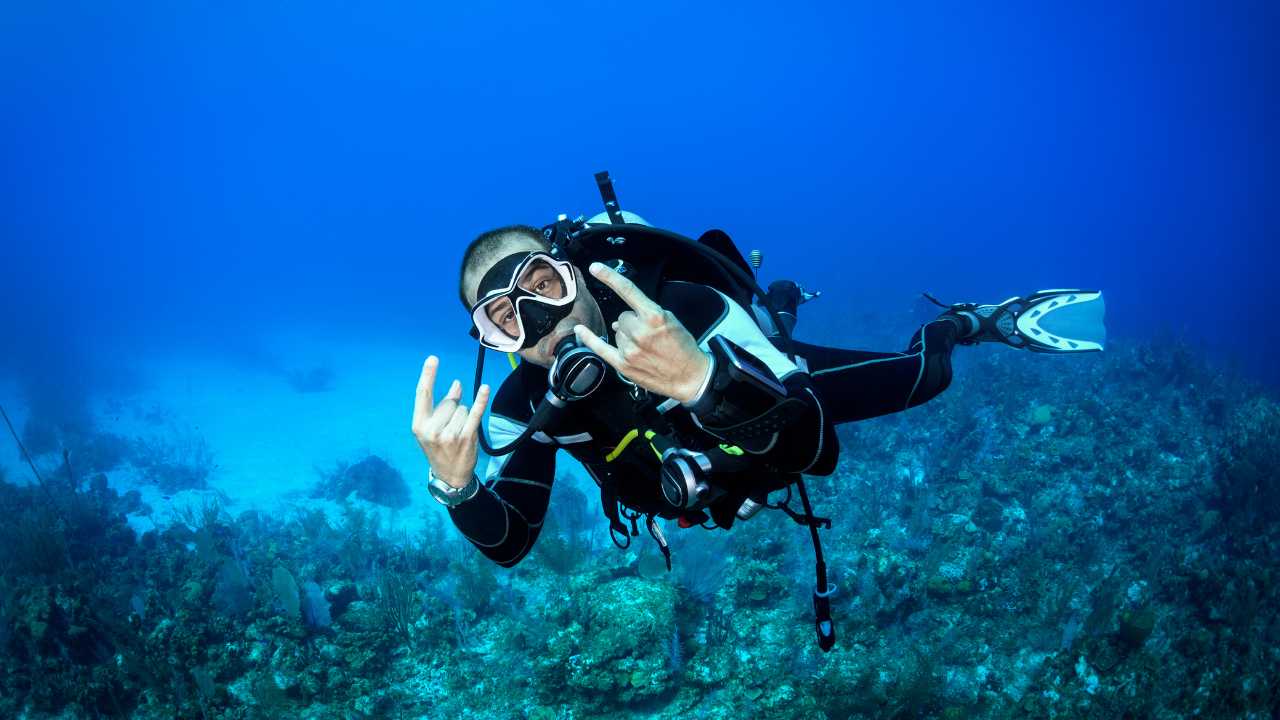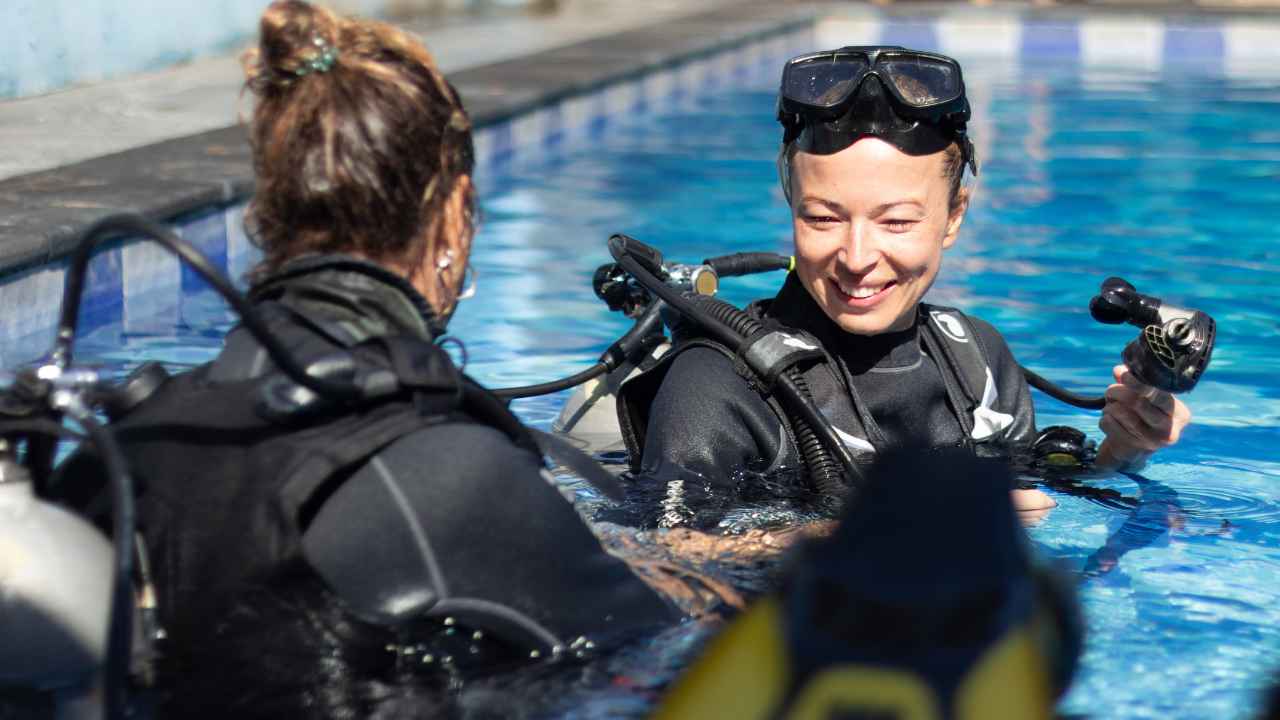The Science Behind Scuba Diving

One of the most essential concepts that recreational scuba divers learn is Boyle’s Law, which states that pressure varies directly with temperature at constant volume.
Understanding this helps explain many aspects of scuba diving physics.
Buoyancy
Things rise or sink in water based on the balance of their density against the downward-pulling gravitational force and the upward buoyancy force.
Buoyancy is determined by the volume of the object, its mass, and its distance from the bottom of the water. (This is true for any object, including people!) If the two forces are equal, an object will stay neutrally buoyant and neither rise nor sink. This is how an airplane floats in the sky, or a submarine stays submerged in the ocean.
When a diver dives to great depth, the air in their lungs is under more significant pressure than at sea level (1 atm). This higher pressure causes gases to dissolve more quickly into the body’s blood and tissues. This increases the chance of nitrogen bubbles forming in the tissues and joints, which can cause decompression sickness, known as the bends.
To reduce the risk of nitrogen accumulation, scuba divers must ascend at a controlled rate and change their breathing gas mixtures at certain intervals during a dive. This is to prevent the build-up of nitrogen in their tissues and to allow time for nitrogen to be safely released.
Air Pressure
Scuba diving in the Grand Cayman Islands is a way to explore the world beneath the surface of lakes and oceans. People do it for recreational, commercial, scientific, and military purposes. The equipment used to scuba dive includes a suit and breathing apparatus that allows the diver to stay underwater for extended periods.
The tanks that scuba divers use hold compressed air, usually a combination of nitrogen and oxygen. The compressed air doesn’t budge underwater, but as it leaves the tank and enters the diver’s breathing tube, it is affected by the underwater pressure. This causes the diver to use more air on each dive because the lungs have to expand to take in the air.
Divers must also be careful not to go too deep on a dive because as the pressure drops, so does the gas in their lungs. If they continue to the point where the nitrogen is fully dissolved in their tissues, it can cause Nitrogen Narcosis, which makes divers feel sluggish and tired.
When filling up a tank, scuba divers must do it slowly. This is because the air molecules are being jam-packed into a rigid area, and the bumping into one another creates heat. If the tank is filled too quickly, it will read higher psi than what it contains because the molecules are hot.
Oxygen

The oxygen in a diver’s tank comes from the fractional distillation of liquid air. This is because oxygen has the lowest boiling point of the main components of air—nitrogen and argon—which makes it easier to separate from them. Once separated, oxygen is heated and compressed. The result is a very dense gas—which can be stored in a scuba tank with relatively low pressure.
When a diver dives, the weight of their wet suit displaces water and buoys them up. The force of this buoyancy is counteracted by the weight of their scuba tanks and the air in their Buoyancy Compensating Device (BCD). The goal is to achieve neutral buoyancy—not sinking nor rising in the water column.
As a diver descends, the pressure on everything increases—including the air in their scuba tanks and lungs. This is why divers must never hold their breath when ascending; doing so causes nitrogen bubbles in their bloodstream, leading to decompression sickness or the bends.
Scuba diving has become a widespread recreational, scientific, and military pastime. However, a new study by researchers at WHOI suggests that it may also be a source of eudaimonia—or happiness.
Nitrogen
Nitrogen is a colorless, odorless gas comprising over 78% of the atmosphere. It is also a common component in scuba tanks. A standard scuba tank contains a mixture of 21% oxygen, 78% nitrogen, and 1% other gases (mostly argon and carbon dioxide).
During a dive, the air pressure in your scuba tank is reduced to match the water pressure surrounding you. This is because the regulator you use to breathe takes the high-pressure air and reduces it to a level your lungs can safely inhale. If the regulator did not do this, you could suffer from lung pressure injuries.
When scuba divers descend, the increased water pressure increases the atmospheric nitrogen concentration. This nitrogen is absorbed into the diver’s body tissues and may form bubbles that lead to decompression sickness (or “the bends”). To avoid this, technical divers typically require one or more mandatory decompression stops during which they change breathing gas mixes.
Excess nitrogen is slowly released back to the surface and into the air during these stops. This decreases the likelihood that nitrogen will form bubbles that can lead to DCS, allowing divers to stay underwater longer with their regular gas mix. Nitrogen also creates other diving gas blends that allow divers to dive deeper or stay underwater longer than regular air. Examples of these are nitrox and trimix.